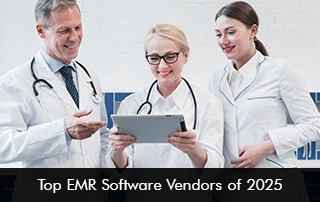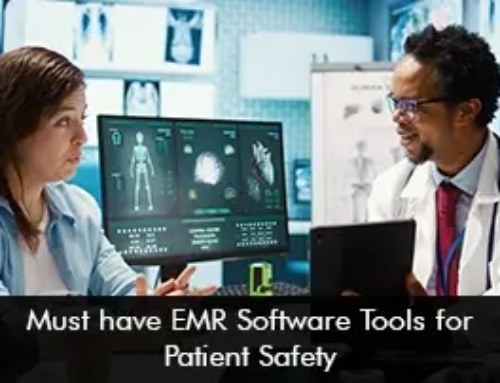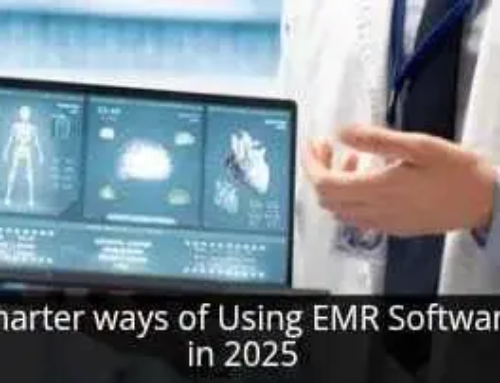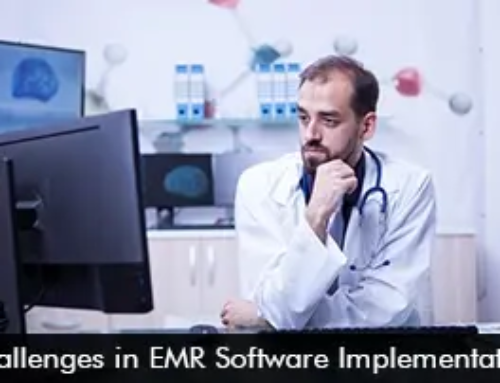EMR software is at the heart of the healthcare industry’s rapid transformation. As we step into 2025, choosing the right EMR software is more critical than ever for healthcare providers and administrators. The right system can streamline workflows, enhance patient care, and ensure compliance with ever-changing regulations.
In this blog, we explore the top EMR vendors in 2025, examining their key features, benefits, and why they stand out in a competitive market. Whether you’re a physician, nurse, or healthcare administrator, this guide will help you make an informed decision.
Why EMR Software Matters in 2025
Before diving into the top vendors, let’s understand why EMR remains indispensable in modern healthcare.
1. Improved Patient Care
EMR software enables real-time access to patient records, reducing errors and ensuring accurate diagnoses. Integrated decision-support tools help providers make evidence-based decisions quickly.
2. Regulatory Compliance
With HIPAA and other regulations constantly evolving, top-tier software ensures compliance, protecting patient data and avoiding costly penalties.
3. Interoperability & Data Sharing
Seamless integration with labs, pharmacies, and other healthcare systems is a must. The best EMR software in 2025 prioritizes interoperability, making care coordination effortless.
4. Cost & Time Efficiency
Automating administrative tasks like billing and scheduling frees up staff to focus on patient care, improving overall efficiency.
Now, let’s explore the industry’s top vendors leading the charge in 2025.
Top EMR Software Vendors in 2025
1. Epic EMR Software Systems
Epic remains a powerhouse in the industry, especially for large hospitals and health systems. Its comprehensive suite offers:
- Seamless interoperability (via Care Everywhere)
- AI-driven predictive analytics for better patient outcomes
- Robust telehealth integration
- User-friendly patient portal (MyChart)
Best For: Large healthcare networks, academic medical centers
2. Cerner EMR Software
Since Oracle acquired Cerner, its software has seen significant upgrades, including:
- Enhanced cloud-based solutions for scalability
- Advanced population health management tools
- AI-powered clinical decision support
- Strong focus on cybersecurity
Best For: Mid to large-sized hospitals, federal healthcare systems
3. MEDITECH EMR Software
MEDITECH has made huge strides with its Expanse platform, offering:
- Intuitive, web-based interface
- Strong interoperability with HIEs
- Cost-effective solutions for smaller practices
- Excellent mobile accessibility
Best For: Community hospitals, rural healthcare providers
4. eClinicalWorks EMR Software
A favorite among independent practices, eClinicalWorks stands out with:
- Integrated RCM (Revenue Cycle Management)
- Healow Patient Engagement Suite
- Cloud-based and on-premise options
- AI-driven documentation assistance
Best For: Small to mid-sized practices, specialty clinics
5. NextGen Healthcare EMR Software
NextGen continues to impress with its flexible solutions:
- Specialty-specific templates (e.g., orthopedics, cardiology)
- Advanced analytics for value-based care
- Strong patient engagement tools
- Interoperability with major HIEs
Best For: Specialty practices, accountable care organizations (ACOs)
6. athenahealth EMR Software
Known for its network-driven approach, athenahealth offers:
- Real-time data exchange across providers
- Automated revenue cycle management
- AI-powered insights for clinical workflows
- Excellent customer support
Best For: Small to medium practices seeking a hassle-free cloud EMR
7. Allscripts EMR Software
Rebranded as Veradigm, Allscripts remains competitive with:
- Open API for third-party integrations
- Strong focus on precision medicine
- Comprehensive analytics dashboard
- Tailored solutions for large health systems
Best For: Health systems needing deep customization
Key Trends in EMR Software for 2025
1. AI & Machine Learning Integration
Modern software leverages AI for predictive analytics, automated documentation, and error reduction.
2. Enhanced Telehealth Capabilities
Post-pandemic, telehealth remains crucial. The best EMR now includes built-in virtual visit functionalities.
3. Focus on Usability & Clinician Burnout Prevention
Vendors are prioritizing intuitive designs to reduce click fatigue and improve workflow efficiency.
4. Blockchain for Secure Health Data Exchange
Some EMR providers are experimenting with blockchain to enhance security and interoperability.
How to Choose the Right EMR Software in 2025
Selecting the best EMR vendor depends on your practice’s needs. Consider:
- Practice size & specialty requirements
- Budget (cloud vs. on-premise, subscription vs. perpetual license)
- Interoperability needs
- User experience & training requirements








